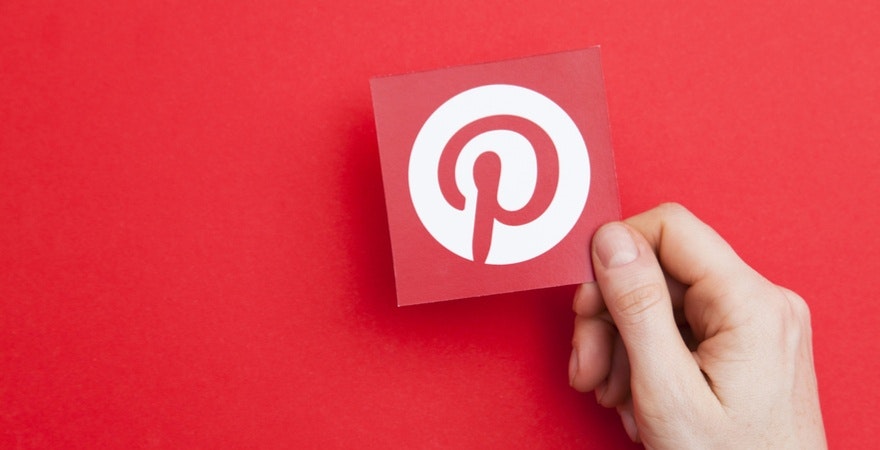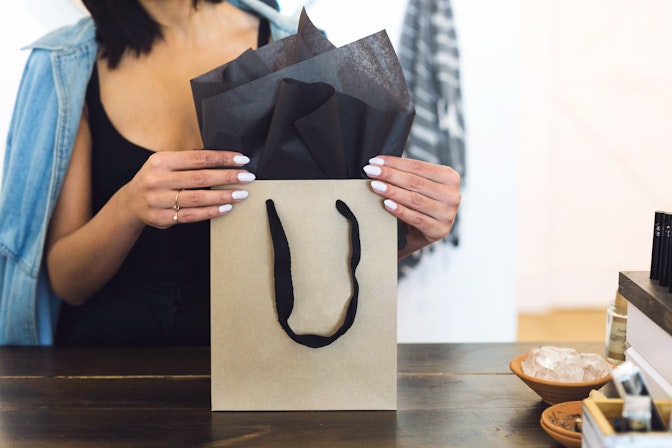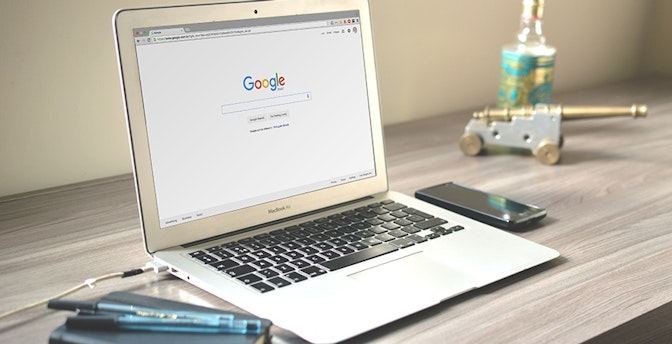Pinterest is an excellent marketing tool for your ecommerce business. When used effectively it can significantly increase traffic to your online store from both mobile and desktop. It is a highly flexible platform, as you can promote your content both organically and via paid promotions. That makes it suitable even if you’re just getting started and don’t have a massive ad budget.
This post looks at some of the most effective strategies and tips that can help you maximize your Pinterest marketing efforts, boost your brand authority, and drive traffic to your online store. At the end of this post you’ll be equipped with the knowledge that you need to use Pinterest for business effectively.
So, let’s get started!



How Can Pinterest Benefit My Ecommerce Store?
Pinterest can benefit your store in many ways. Pinterest provides a way to connect directly with existing and potential customers. Using pins and boards you can create appealing content that increases your brand authority and drives traffic to your store.
Also, after partnering with Shopify, it is now possible to sell products directly on Pinterest with Buyable Pins (we will look at these more closely a little later). This makes Pinterest a valuable additional sales channel by allowing users to buy your products from directly within the app.
→ Click Here to Launch Your Online Business with Shopify
Pinterest by Numbers
Pinterest has great market demographics for ecommerce:
- More than 200 million people use Pinterest every month, increasing 40% over last year,
- Around 1 out of every 2 US millennials uses Pinterest,
- 80% of users use the mobile app,
- 1 out of 2 users have made a purchase after seeing a Promoted Pin.
As you can see, Pinterest is a great way to reach mobile users with your products, especially in niches such as fashion, beauty, and lifestyle, millennials are a key target audience.Promoted content also has a high success rate on the platform, making paid campaigns worth the ad spend.
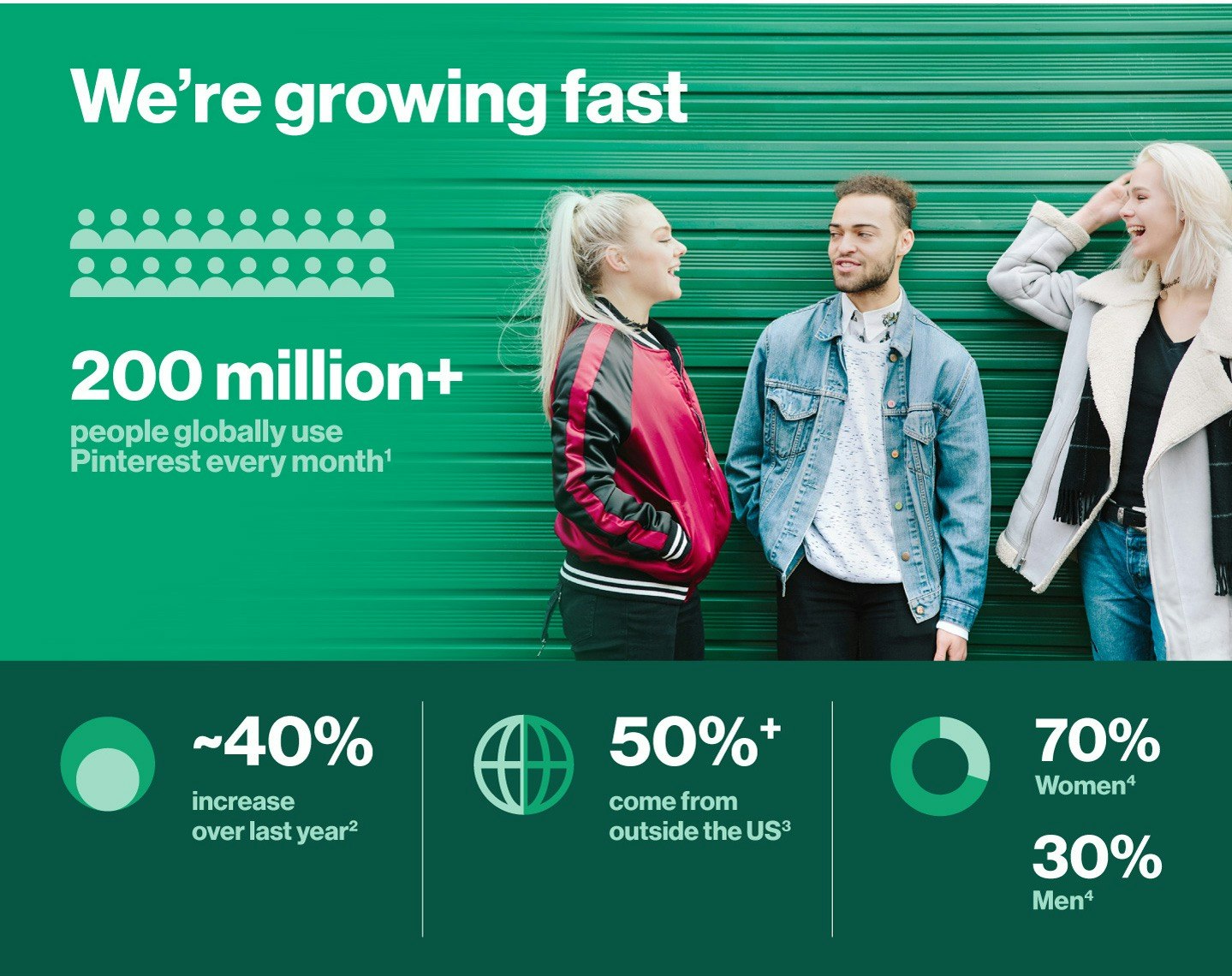
And for Shopify store owners the stats just keep getting better:
- The average order value of sales coming from Pinterest is $50 – higher than any other major social platform.
- Pinterest is the #2 overall source of all social media traffic to Shopify stores.
- 2M people pin product pins per day
- 93% of Pinterest users use the platform to plan purchases.
With these kinds of numbers, store owners that don’t include Pinterest in their marketing strategy may be missing out on a great traffic source, especially when using Pinterest for business.
Setting up Pinterest: First steps
While this guide offers many universal tips, we recommend starting with this section first. By setting up your Pinterest account in this way, you can maximize your benefits from the other tips in this guide.
1. Get a Pinterest Business Account
The first thing you will want to do is get a Pinterest for Business account. It’s free to upgrade from a normal account, and it adds a whole lot of extra functionality. This includes Pinterest ads and analytics: you can see how users interact with your pins and promote your content.
To get a Pinterest business account click here and enter your business name and email address. If you already have a Pinterest account, you can simply hit the upgrade account button and complete the steps above.
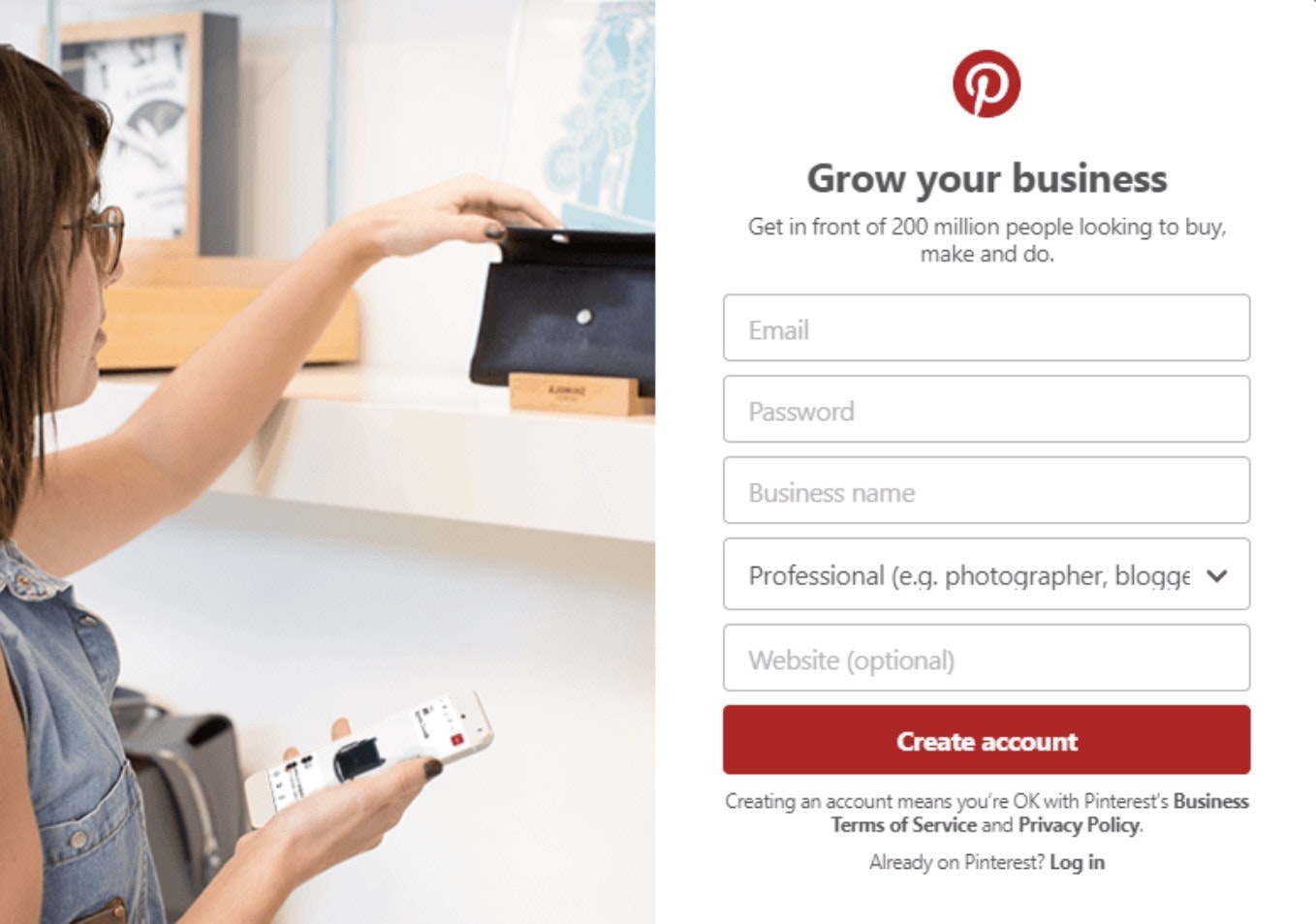
2. Claim Your Website
This step is important for three reasons. It allows you to do the following:
- Website analytics data – this allows you to see how pins from your store are performing.
- Featured logo – your profile picture or store logo can be added to all your pins.
- Early access to new tools – Pinterest give priority to cool new features to users who have claimed their site.
- Pinterest SEO advantage – claiming your site can improve your rankings when users search within the app.
For Shopify users it’s really simple to claim your website:
- Click your Pinterest profile image and then, Settings > Claim Website.
- Select the Add HTML tag option, copy the whole thing.
- Head over to your Shopify admin panel.
- Click online store > themes > actions > edit code.
- Click theme.liquid and paste the full meta tag directly after the <head> tag.
(More detailed instructions here).
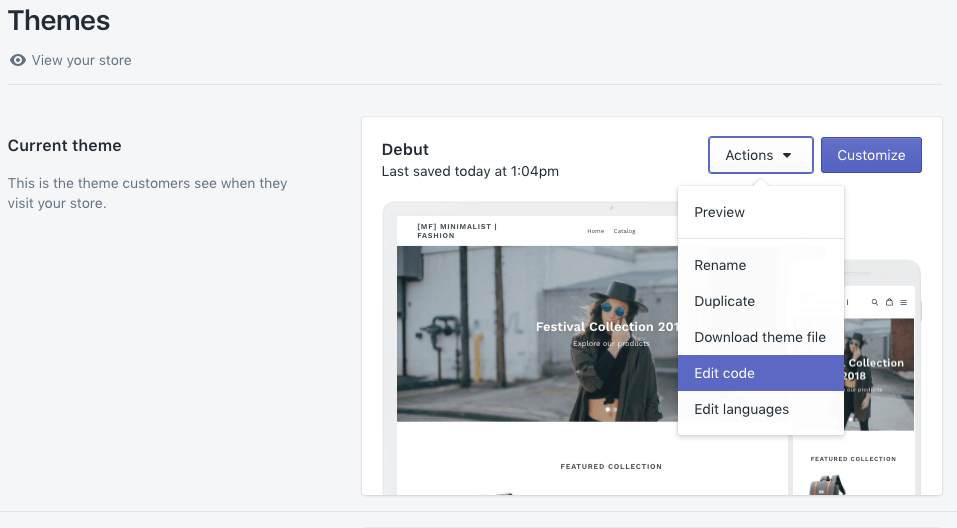
3. Enable Rich Pins
Rich Pins allows you to add extra information to your post, including price and seller information. Shopify is automatically set up to be able to use Rich Pins.This means you only have to enable them on Pinterest. To do this, follow these steps:
- Copy and paste a specific product URL into Pinterest’s Rich Pin validator.
- Add .oembed to the end of the URL.
- Click validate and then click apply.
- Rich Pins will be enabled within 24 hours.

It may take up to 24 hours for your Rich Pins to appear. (If it takes longer than this, you may want to check that you followed the step correctly.)
If you have any trouble with the steps above, please refer to this guide.
4. Use Buyable Pins
Buyable Pins allow users to purchase your products without leaving the Pinterest website. Many Shopify users have been enjoying impressive success with Buyable Pins:
- Flyaway Bluejay were able to boost sales 20% and store traffic by 28%.
- shophearts were able to boost sales by 15% and store traffic by 20%.
Please note that buyable pins are currently available to users in the U.S. on Desktop, Android, and Apple mobile devices.
Top Tips for Getting Sales with Buyable Pins
Make Multiple Pins for the Same Product: Try changing the angle of the product photo and playing with the description. Check out this handy guide to learn how to take the perfect product photo.
Test Pins in Secret: Use a secret board to make sure your Pin looks great before you publish. When you’re happy make the board public. This avoids missing descriptions or non optimized photos being made public.
Emulate Successful Product Photos: Check out successful brands in your niche. How are they presenting their products? Scan through a similar brands photos and look at the background, whether the photos is zoomed, if the company logo is included or text overlay is used. If you can identify a trend that is working in your niche, try and replicate this in your own Pins.
Note: not all products are eligible to be made into Buyable Pins. The following cannot be sold:
- Customizable products.
- Non-physical goods, like digital downloads.
- Adult products and services.
Each Buyable Pin must point to a specific product page at your online store. The following types of URLs do not work for Buyable Pins:
- URLs that lead to category pages.
- Shortened URLs.
- Redirects.
- URLs with primary domains that don’t match the website listed on your Pinterest profile.
5. Use Rich Pins
There are currently four types of rich pins on Pinterest: product, recipe, article and app. We are mainly interested in product and article rich pins when using Pinterest for Business.
Rich Product Pins
As you know from the previous tip, you cannot create buyable pins for all products. This is where Rich Pins can help out. Using a Product Rich Pin the price and brand of your product can still be displayed. This example from shophearts illustrates a Product Pin on a mobile device. The additional information includes that the product is in stock, the price, and where the user can buy the product.
However, it’s important to note rich pins are not buy enabled. This method should be used if you would prefer to drive traffic to your store, rather than sell directly on Pinterest.
If you want to also sell directly on Pinterest you should use the Buyable Pins method as described above.
Rich Article Pins
Another strategy for using rich pins is to boost organic traffic through Rich Article Pins. If you have a blog as part of your marketing strategy, it is worth repurposing your content on Pinterest. This can boost organic traffic. While this strategy is not as direct as using product pins, it’s worth it because it is very time effective.
In general, you need to create (if your hero image for your blog post is not descriptive enough on its own) an image that summarizes your blogpost and grabs a users attention. List style articles work well for this purpose.
Once you’ve created your image you can create a Rich Article Pin. This will then feature the image, headline, article description, the publisher (your store/blog), and a “Read it” call to action. This article then links to your blog/store driving organic traffic. In this example, a blog article has been turned into an Article Rich Pin. The cover image visually describes the content of the article and relates to what this user is trying to sell – scarves.
6. Keep Your Product Links Up-To-Date
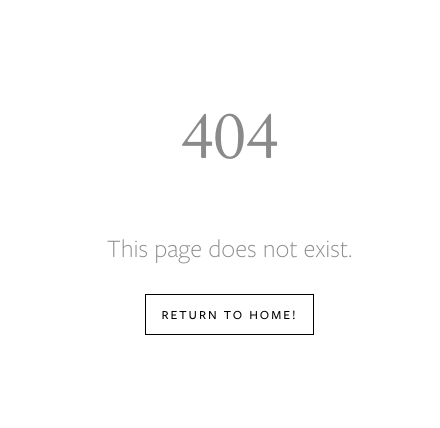
You should always make sure that your links work when you’re using Pinterest for business.
There is nothing worse than a user finding one of your awesome products only to be hit with a 404 error page because you removed the product from your store.
Using Buyable Pins can be a great way to keep track of this, as the Buyable Pin will not be displayed if a product is out of stock.
7. Optimize Your Image Ratio
Pinterest’s vertical aspect ratio guide says:
- Vertical Pins take up more space and tend to stand out more
- The ideal aspect ratio for a vertical Pin is 2:3—600px wide x 900px high
- Square images—600px wide x 600px high—can work well, too.
- Pins longer than 1260px high will get cut off, and people will only see the entirety of the Pin when they tap it for a closeup.
- Pinterest optimizes Pins that fit within these preferred aspect ratios.”
So tall images work well and the optimum size that we recommend is 900px by 600px. However, you can experiment with making your images even longer to take up more space like the example below.
A good example of long vertical images that do well in Pinterest are infographics.
If you’re interested, check out this awesome guide on how to make infographics for you online store.
8. Promote your Pins
If you have a Pinterest business account and have claimed your website as in the first 4 steps, then you can advertise on Pinterest.
Promote your best performing products to increase engagement and return on ad spend. Simply click on the Pin you want to promote and fill in the ad campaign details. This works in a very similar way to Facebook ads. You can set a daily budget and define a target audience based on interests.
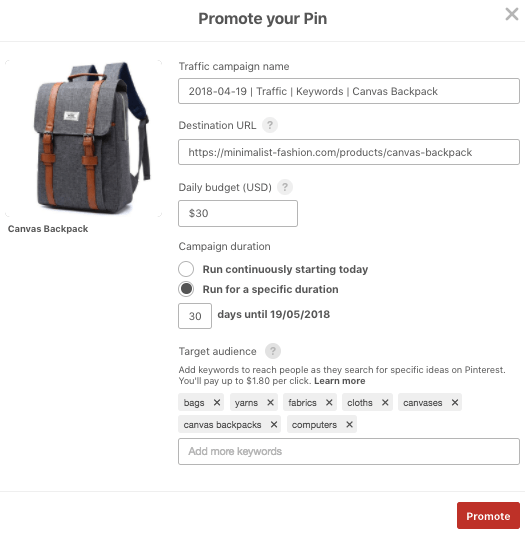
And yes, you can also promote Buyable Pins. Promoting Buyable Pins turns Pinterest into a fully fledged ecommerce channel, from advertising to sale all within the platform.
9.Use Discount Codes
Add a discount code to encourage buyers to take action when you’re using Pinterest for business. The discount code can be added to the product description or as a text overlay and can work well for Buyable Pins, Rich Pins, and normal Pins.
10. Divide Your Products into Boards
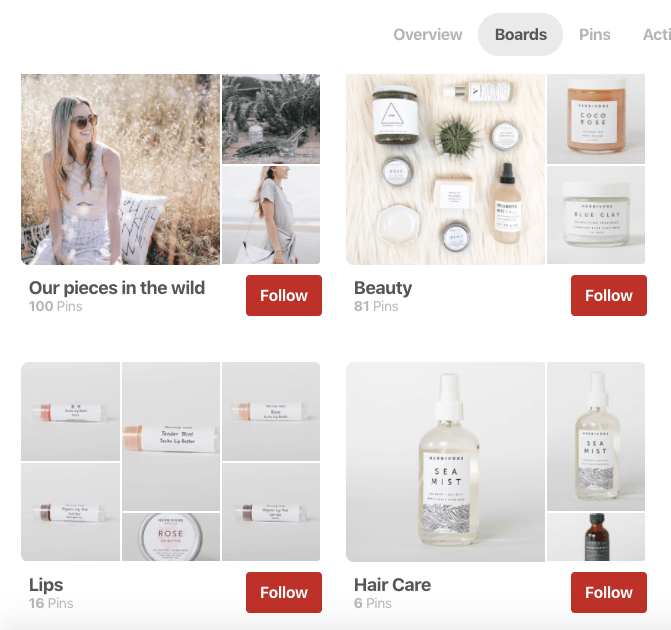
Just like a successful ecommerce store, high performing Pinterest users typically segment their products by using boards.
We recommend that you create a board for each category of product.
Additionally, you can also create seasonal boards e.g. winter, Christmas, or summer-themed products.
This helps users find what they are looking for quicker when you’re using Pinterest for business.
11. Optimize Your Pinterest Pins & Boards with Keyword Research
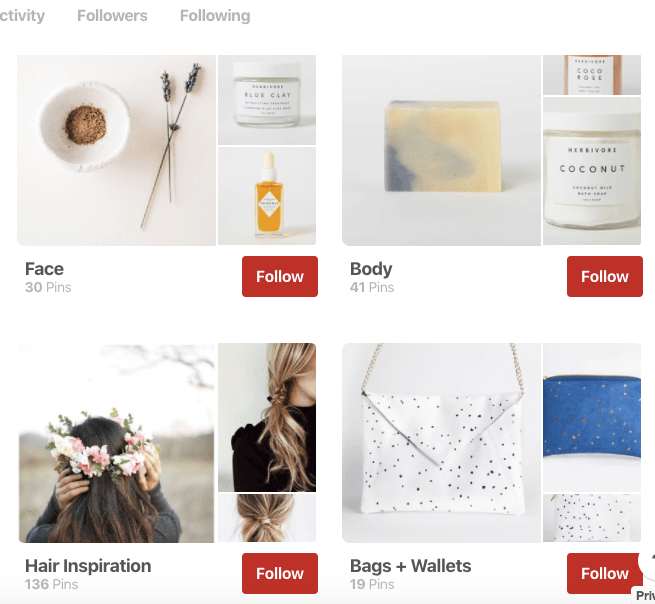
Make sure your board names are on point.
Also, treat each Product Pin (Rich or Buyable) like you would a product description.
In general it’s best to avoid terms that are too generic.
Things like “girly stuff” or “guys stuff” are too vague.
Be more descriptive. Split your products into boards based on product category.
12. Add Some Text to Your Images
Text overlay can help your Pins stand out in a sea of textless images. Text overlays can work well for infographics, list type articles. Quotes also work really well for this purpose.
Canva is a very useful image tool that can be used to add text overlay when you’re using Pinterest for business.
13. Curate Content from Other Users
Pinterest users appreciate great content.
As a store owner, you know your audience and what they link. If you see great content then share this with your audience.
Note: remember to share content that is focused around your products; don’t promote products from direct competitors. Instead, share ideas that will inspire your audience to use your products.
14. Try Using Zoomed Images
Track Maven found that zoomed in images are more engaging.
For example, brands like L’oreal tend to use zoomed in images of features to market their products.
Based on Track Maven’s data, images that contain 40% or more background receive 2 to 4 times fewer repins.
Try this tactic out with your own product photos.
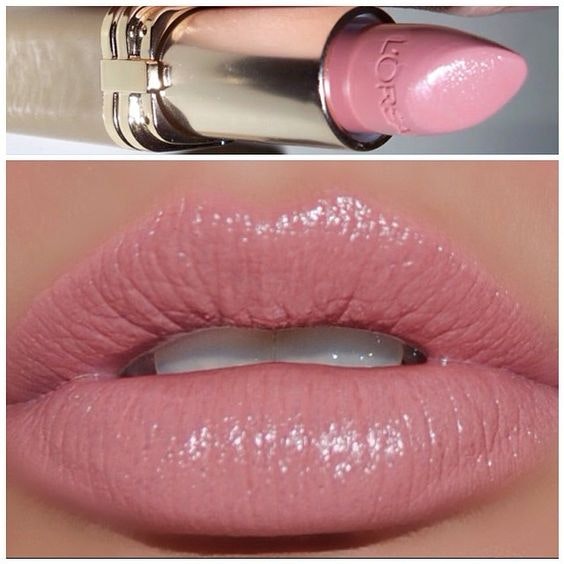
Also be sure to check out this handy product image guide to ensure yours are up to scratch.
15. Leverage Your Pinterest Analytics Data
As a Pinterest for Business user you have access to analytics. Make a habit of regularly reviewing how your Pins are performing.
Your analytics review includes:
- Organic pin performance
- Paid promotion performance
- Buyable Pins interaction
These numbers can help you make smart marketing decisions.
If a particular pin is not performing, try creating 3 or 4 variants of the same pin. These variant pins could include different products photos (e.g. from different angles) and altered product descriptions.
Test these variants and see which performs the best. Once you are confident you have found an organic pin that performs well, consider promoting this pin as a Buyable Pin.
Equally if you have found a paid pin that performs well, increasing your ad spend on this pin and dropping the low performing campaigns
By looking at how your users interact with what you post and share, you can narrow down categories that do particularly well. For example, if you own a women’s’ apparel store, perhaps fitness/lifestyle apparel outperforms other categories. If you identify a trend like this, consider focussing your marketing efforts on this Pinterest board.
16. Check Out These Apps
There are plenty of great apps that can help speed up your marketing workflows. These are just a few of the best:
- Social Media Stream – Allows you to insert a live Pinterest stream feed onto your Shopify website so people can see what you’ve been pinning.
- Outfy Social Media Promotion – Automated Pinterest posting, linking product collections with your Pinterest Boards.
- Social Autopilot – Automatically Pins new products to your Boards.



Want to Learn More?
- How To Launch Your Ecommerce Store in Less Than 30 Minutes Flat
- How to Find the Perfect Dropshipping Products
- 10 Word of Mouth Marketing Examples to Grow Your Business
- 20 Tips for Using Quora for Ecommerce Marketing
Do you have your own Pinterest marketing strategies? We would love to hear about them in the comments below!
